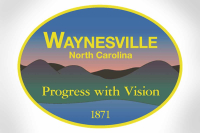N.C. lawmakers micromanage school calendars from afar
 State legislators have once again tinkered with school calendars, reining in when early school districts — even those prone to excessive snow days — can start back in August.
State legislators have once again tinkered with school calendars, reining in when early school districts — even those prone to excessive snow days — can start back in August.
State law mandates that school can’t start back sooner than the last week in August. However, counties with lots of missed school due to snow have been exempt in the past.
Now even counties that have a so-called “weather waiver” can’t start back sooner than the third week in August.
“For those who do receive waiver, it is only for basically a week,” said Fred Trantham, the policy director for Haywood County Schools.
Haywood is one of 25 counties that currently qualifies for the weather waiver, which was once a free pass to start school back however early they wanted.
Related Items
The policy change was apparently intended to stop school systems from taking advantage of the weather waiver.
But, limiting how early school can start back in August could also tie a school district’s hands when a severe winter strikes.
Haywood County students twice in recent years have missed 13 days of school. Starting one week earlier than the rest of the state would only make a partial dent in the needed make-up days.
There are four options for making up missed snow days: start earlier in August, whittle away at winter and spring breaks, add days with Saturday school, or tack them on to the end of the school year in June.
None are particularly popular with students or parents, and each comes with a good dose of opposition.
There is now a fifth option under the state’s latest school calendar rules: cut into teacher workdays. Previously, school districts were required to have a minimum of 15 teacher workdays. Now, the minimum is 10.
Schools could build in the full 15 workdays but take them away if necessitated by snow days.
While students and the tourism industry might be celebrating the clampdown on weather waiver flexibility, Haywood Schools now face a tough decision, Trantham said.
If they can’t start early enough in August to get a full semester finished by winter break — including end-of-semester exams — then it might be best to just wait until the end of August.
If school starts back the third week of August, end-of-semester exams coincide with the first week students come back to school in January after winter break. Students would be better off taking exams in mid-January after being back from winter break for a couple of weeks, which would mean waiting to start school until late August.
“Basically what our rule of thumb is, especially for schools operating on a semester basis, if you can’t start early enough in August to get your first semester in before Christmas, then it could be better to wait,” Trantham said.
A particularly long summer
Haywood County students and parents could be dealt a rare three-month summer in 2013. A series of odd circumstances have set the stage for this unusually long summer.
One factor is the new rules laid out by state legislators that would keep Haywood County Schools from going back any earlier than Aug. 19 next school year despite their weather waiver.
Meanwhile, a particularly early back-to-school date this year — Aug. 8 to be exact — could lead to a particularly early end to the school year. School in Haywood County could get out as early as May 20 if there are zero snow days this winter.
In the zero snow day scenario, students in Haywood could enjoy a protracted three-month-long break from May 20 until Aug. 19.
Of course, it is extremely unlikely there will be no snow days. Haywood County always sees at least some, logging no fewer than five during the milder winters and as many as 13 during harsher winters during the past decade. Seven or eight snow days seems to be average.
Even then, the summer is on par to be at least a couple of weeks longer than usual.
Haywood County Schools started back abnormally early this year due to a glitch in state laws that stipulate how and when teachers are paid.
Typically, teachers get one paycheck a month, with their annual salary spread across either 10 or 12 months, depending on the pay schedule they chose. The first check for teachers on the 10-month schedule comes in August, and historically August’s check would be for a full month regardless of when school actually starts back. Even if teachers don’t come back promptly at the beginning of August, they still get a full check that month, as their salary is simply spread out in 10 equal payments throughout the year.
A new state law went into effect this year, however, that prevented school systems from paying teachers a full month of pay for August if they hadn’t actually worked a full month. Teachers counting on a full check the month of August would only get partial one, with the pay instead redisbtributed in other months of the year.
Haywood County Schools feared that the sudden change by the state would leave teachers in a bind who were expecting a paycheck in August.
“They had mortgage payments set up and car payments set up,” Trantham said.
So in an 11th-hour change of its own, Haywood Schools took advantage of its weather waiver to bump up the school start date by one week to Aug. 8. That meant teachers would come back at the beginning of August, and thus could get a full paycheck in August after all. The legislature has already undone the problematic policy so schools can return to paying teachers in evenly divided paychecks over 10 months.
The school start date saga: a short history
The latest school calendar move is part of a decades-long push and pull between lawmakers and local school districts over school start and end dates.
School systems once had autonomy over their own back-to-school dates, but that changed in 2004 with a state decree ordering how soon school could start back in August.
School start dates had been creeping ever earlier, trespassing more and more into the precious days of summer vacation.
A group called Save Our Summers lobbied state lawmakers to do something about it, prompting a bill limiting how early school could start. The group’s motives weren’t solely about preserving the magic of summer days for youth. It was largely backed by tourism interests, which were being hurt by a loss of August vacationers due to early school start dates.
The state initially failed to take into account the special circumstances of mountain counties that racked up lots of snow days.
The state went back to the drawing board the next year and came up with the “weather waiver.” School districts prone to excessive snow days were exempt from the mandatory start date and could start earlier in August, providing a cushion for snow days without having to extend the school year
To qualify for the waiver, school districts had to miss more than eight days due to snow in at least four of the past 10 years. The waiver applied to about 25 counties this year. Haywood, Jackson, Macon and Swain all qualified for weather waivers this year.









